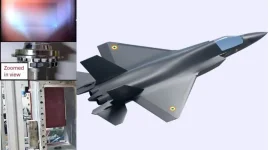
In a significant advancement with potential applications in defence, communications, and scientific imaging, researchers at the Indian Institute of Science (IISc) have successfully created a device capable of converting infrared light into visible light.
This breakthrough technology utilizes a novel non-linear optical mirror stack made of a 2D material, gallium selenide, to "up-convert" the frequency of short infrared light, making it detectable by standard silicon-based cameras.
Infrared light, invisible to the human eye, has lower frequencies than red light on the visible spectrum. Traditional infrared imaging, often employed in defence and research, relies on specialized sensors that are typically bulky, inefficient, and subject to export restrictions due to their strategic applications.
The IISc team's innovation addresses these limitations by offering a more efficient and potentially cost-effective alternative. Their device functions by combining an input infrared signal with a pump beam onto the mirror stack. The unique non-linear optical properties of the gallium selenide within the stack cause the frequencies to mix, resulting in an output beam of increased (up-converted) frequency while preserving the original properties of the input beam.
This method successfully up-converted infrared light with a wavelength of 1550 nm to 622 nm visible light, a wavelength easily captured by conventional cameras. The researchers are now exploring ways to extend the device's capabilities to up-convert light of even longer wavelengths and to improve its overall efficiency.
Associate Professor Varun Raghunathan from the Department of Electrical Communication Engineering at IISc emphasized the global significance of this achievement, stating, "There is a lot of interest worldwide in doing infrared imaging without using infrared sensors. Our work could be a game-changer for those applications." This technology could revolutionize various fields, from enhanced night vision capabilities for defense to improved medical imaging and telecommunications.


